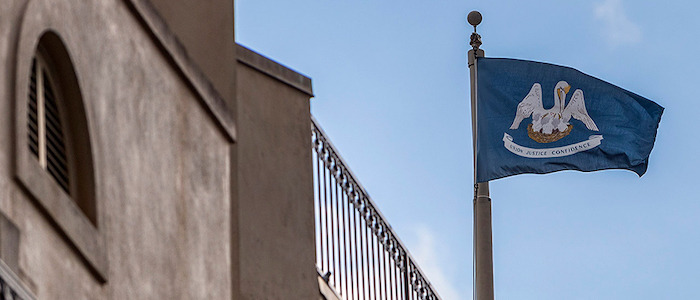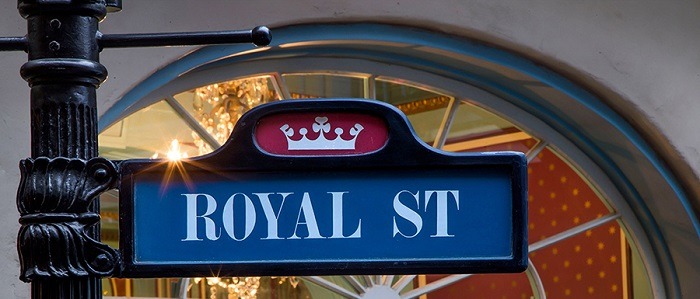Celebrating Disneyland's New Orleans Square, The Park's First-Ever New Land
A theme park, as the man once said, is not a museum. Change is built into the DNA of a theme park, and the biggest kind of change comes in the form of an entirely new section built into the existing bones of such a park. Think of the hubris of building a new land into Disneyland Park in Anaheim, California. Think of the high expense of creating such a land, of trying to create massive buzz around its arrival, and then opening well before any actual attractions would be ready. Current fans of the Disney theme parks may have a fixed image in their minds of what that land is. Maybe you're thinking of Star Wars: Galaxy's Edge, which opened in Disneyland before its true marquee attraction, Rise of the Resistance, was ready for guests. Or maybe you're even more current, imagining Avengers Campus at Disney California Adventure, which arrived years before its E-Ticket attraction would be ready.
Think back further. Think back to the first land added to Disneyland Park after its opening in 1955. Think of New Orleans Square, home to two of the most beloved attractions in Disney history, a land that opened 55 years ago without any attractions at all.
The Big Easy
The core premise of Disneyland was that it was a park divided into four major areas. Though the park's own introductory section, Main Street, U.S.A., easily constitutes a fifth area, when the anthology TV series named Disneyland began airing episodes in the fall of 1954, the show itself existed as much as an advertisement for the upcoming theme park as a celebration of Disney as a whole. And the show promised episodes themed based on those four areas: Adventureland, Tomorrowland, Fantasyland, and Frontierland. But as detailed by historian Jim Korkis, Walt Disney always had his sights set on an area of the theme park dedicated to the Big Easy.
That much was clear as far back as the fourth week that Disneyland was in operation. On August 9, 1955, actress Dorothy Lamour (also a native of New Orleans) helped dedicate New Orleans Street, an offshoot of Frontierland. As was the case with the original iteration of New Orleans Square, the area wasn't driven by attractions, but instead shopping and dining (such as a pancake kitchen themed to the Aunt Jemima brand). But Disney – whose vision for Disneyland had plenty of areas that either lasted very quickly or never came to fruition at all, such as an Americana-flavored offshoot of Main Street called Liberty Street – never gave up on the Big Easy.
New Orleans Square was, for its time, an enormously expensive endeavor. Disney himself, as part of the general ad campaign, touted that New Orleans Square cost $18 million, more money to build than the entire Louisiana Purchase. Leaving aside the reality that inflation plays a big factor in comparing two expenses from two different centuries, New Orleans Square purportedly cost just $2 million less than the entirety of Disneyland Park did in 1955 to create from the ground up.
Honored by Disney
But when the new land was dedicated on July 24, 1966 by Walt Disney and New Orleans Mayor Victor Schiro, there were no attractions in the traditional sense. Instead, what New Orleans Square offered was immersion in a more holistic sense, with shops and restaurants dotted amidst wrought-iron railings and building design inspired by the French Quarter itself. The reaction at the time, from both audiences and journalists, was emphatically positive. As was written in the New Orleans Times-Picayune at the time of the opening, "No other city in America has been so honored by Disney."
It is frankly difficult, if not outright impossible, to consider now the multi-million-dollar risk of New Orleans Square, especially when you compare its construction with that of Galaxy's Edge or Avengers Campus. In some broad ways, these three lands are all very similar. They all took years to build, and many millions of dollars. They all take up enough of a footprint at an Anaheim theme park to funnel audiences towards them, in spite of not boasting E-Ticket attractions on their opening day. (Avengers Campus is the outlier here, in that the area it occupies was previously occupied by A Bug's Land, themed to the Pixar film a bug's life. Both New Orleans Square and Galaxy's Edge, aside from them each being in Disneyland Park, take up space that wasn't previously occupied by another land.)
Reviews of Galaxy's Edge and Avengers Campus were a bit more mixed than those early reactions to New Orleans Square. And now that the dust has settled at Avengers Campus, with the Web Slingers attraction serving as the marquee ride for the time being, there's been enough criticism on Disney Twitter (remember, it's real and...well, it's not spectacular, but it's real) about how the daring food choices in the land aren't matched by similarly daring attractions. Not that these complaints are or aren't justified, but it's all the more surprising to see that New Orleans Square was widely embraced.
The Charm of Immersion
The two major fixtures that were present on New Orleans Square's opening day that remain there now are the Mint Julep Bar located right next to the Pirates of the Caribbean show building, and the French Market restaurant, which itself has shifted over more than 50 years. But the two sit-down restaurants people know and love – Blue Bayou and Cafe Orleans – were but a glimmer in anyone's eyes at that point. Cafe Orleans wouldn't open at Disneyland until 1972. Blue Bayou, like the Pirates of the Caribbean ride itself, wouldn't open until the spring of 1967. The same is true for one of the most hallowed locations in all of Disneyland, the members-only dining spot Club 33. That too wouldn't open until the middle of 1967, nearly a year into the land's existence.
New Orleans Square is a more compact land than either Avengers Campus or Galaxy's Edge, the latter of which has the benefit of extremely detailed and deliberately alien theming. (Although Galaxy's Edge abuts both Fantasyland and Frontierland in Disneyland Park, once you leave those lands behind and walk through Batuu, it genuinely feels like you're in an entirely different world, a sign of how successful the Imagineers were at creating the area.) But that compact quality must have had quite the appeal even back in the mid-1960s. The few bits of footage available from the grand opening, some of which is available in the "Disneyland Around the Seasons" episode of the Walt Disney anthology TV series (aired days after Walt Disney's passing), highlight that the charm of Disneyland has been as much with its immersive quality as with the ability to interact with all sorts of intellectual property.
The present-day iteration of New Orleans Square is, as is the case with just about every other square foot of a Disney theme park, awash in intellectual property. The massive success of the Pirates of the Caribbean films in the early 2000s made it so the pinnacle of Disney theme-park attractions is now also the Captain Jack Sparrow show. (That Pirates of the Caribbean remains the greatest of all Disney attractions is a testament to its power, and to the fact that Captain Jack has become slowly a bit less omnipresent in the attraction, mostly resorting to peering his Audio-Animatronic face next to barrels behind which he hides.) And The Haunted Mansion spends four months a year being entirely retooled to The Nightmare Before Christmas with Haunted Mansion Holiday. (Leave aside the fact that the very premise of the original Haunted Mansion ought to suffice for Halloween.)
More than most sections of Walt's park, when New Orleans Square goes under construction for some reason, it typically becomes a cause celebre among the online faithful. (If you weren't paying attention back in the day, the furor over Disney adding a bridge in one of the walkways may seem truly outrageous, but people were mad.) That's because no matter how many ways the Imagineers are tasked with shoehorning in intellectual property that post-dates the land, New Orleans Square endures with the homey, alluring charm of the real Big Easy. Audiences were able to lock into its delight when it opened 55 years ago. It didn't need pre-existing characters or stories. It didn't even need attractions to become a land many guests have fallen in love with, and never forgotten.


